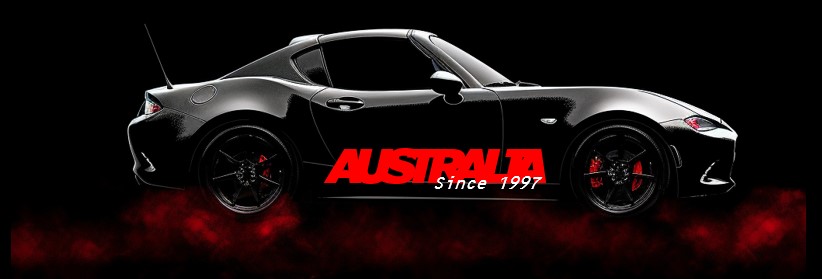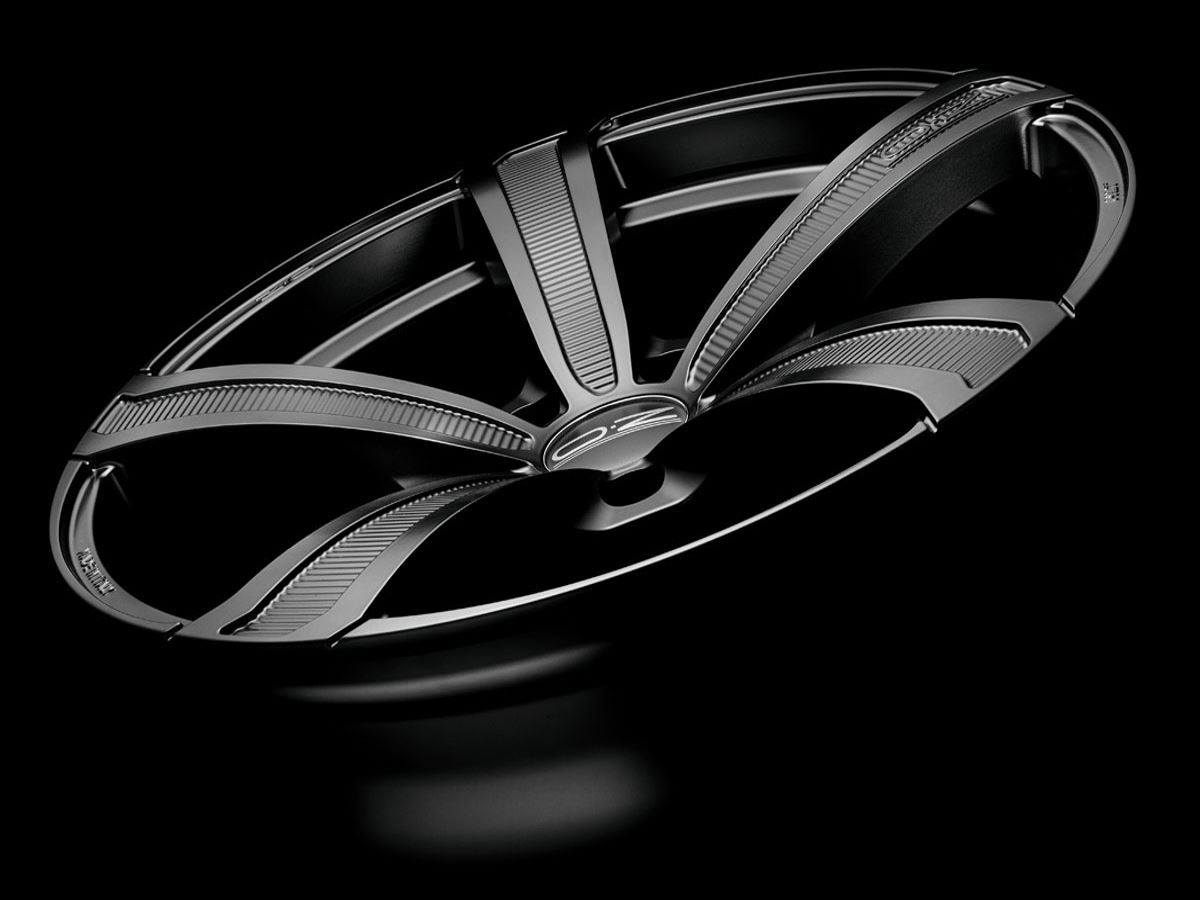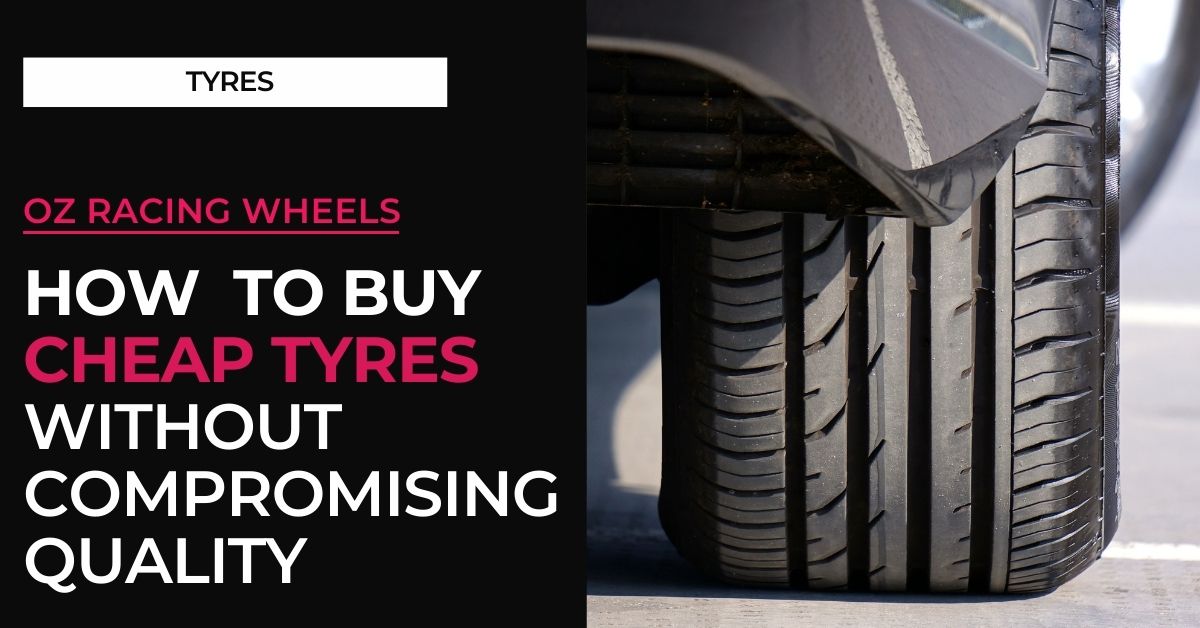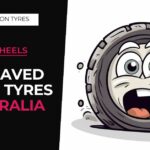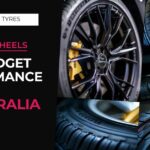Is it cheaper in the long run to buy cheap tyres instead of premium brands?
Did you know most Australians overspend on premium tyres unnecessarily?
For example, a premium tyre with a speed rating of W is designed for speeds up to 270 km/h.
When was the last time you drove 270 km/h on Australian roads, Mr S. T. Hedgehog?
Even a tyre speed rating of S (6 stops down from W) is perfectly fine for speeds up to 180 km/h, and will cost you far less.
But “Are they safe?” I hear you ask.
Yes, if you buy the right tyre for the job – more on this later.
Related: How I saved $352 finding out the real cost of tyres + the real cost of tyre fitting.
In this guide to cheap tyres, we’ll cover the following:
- What Should You Consider When Buying Cheap Tyres?
- How to Find the Right Cheap Tyres
- What Do You Want in a Tyre?
- Tips and Strategies for Finding Cost-Effective Tyres
- How to Make Cheap Tyres Last Longer
- How to Avoid Scams When Buying Tyres
- REFERENCE: Tyre Speed Ratings
- REFERENCE: Tyre Load Ratings
- Further Questions About Cheap Tyres
- How Often Should You Change Cheap Tyres?
- Are Cheap Tyres More Likely to Blow?
- Are Cheap Tyres Safe for Regular Use?
- How Do I Identify Reliable Cheap Tyres?
- Can Cheap Tyres Provide Good Traction in Wet Conditions?
- Do Budget Tyres Offer Similar Fuel Efficiency as Expensive Tyres?
- Are Cheap Tyres a Good Choice for Off-Road Driving?
- Can I Trust Online Sellers for Cheap Tyres?
- What Is the Best Time of the Year to Buy Cheap Tyres?
- How Can I Properly Dispose of Old Tyres?
What Should You Consider When Buying Cheap Tyres?
There are a few things worth considering when buying a new set of tyres, whether cheap/budget or premium.
Safety should always be your first and most important consideration, but how you drive, the car you drive, and where you drive will help you decide which tyre is right for you. Most of the time this isn’t the most expensive tyre. Far from it.
Are Cheap Tyres Dangerous?
Even premium tyres can be dangerous.
All tyres become dangerous as they wear. This puts you at greater risk when the tread becomes thin, unevenly worn, compromised (such as a dreaded nail), or age (old tyres are bad news).
That’s why you should always keep an eye on your tyres, and change them before they become a safety risk.
You probably don’t want the cheapest tyre either. Some brands aren’t very good at all, and these can affect traction and braking, or just annoy you with a constant drone on long drives.
Avoid really cheap tyres.
If you’re smart and buy the right tyre for your needs, this will save you blowing a lot of money on premium tyres, even if they do have “state-of-the-art tread design” or “superior grip” so your car sticks like a koala on a eucalyptus tree.
Read on, and you’ll learn how to choose the right tyre for your needs, for the best possible price.
How Do You Drive?
How you drive plays a big part in what tyres you buy.
Sticking part-used budget tyres on your over-clocked Nissan Skyline might not be the best idea, but can be ideal for getting your Holden Barina to and from Coles on Sundays.
If you drive aggressively or race at weekends then invest in a better rated tyre. Otherwise, save your money, buy a cheaper tyre, and with the money you save take advantage of today’s ridiculous interest rates like accountants do.
Where Do You Drive and What Terrain?
Most drivers need a tyre for “normal road use”. By that I mean tarmac roads, not heavily corrugated dirt tracks in the Sunraysia region of VIC (where Sunraysia rims hail from).
If you regularly hit rough terrain or take your ute or 4×4 off-road, you’ll need to invest in a more premium tyre. It’s as simple as that.
You don’t want a blow out 50km from the nearest pub, do you?
(Yes, this happened to me)
What Car Do You Drive?
So you’ve invested in a Mercedes AMG A45 and you’re looking for cheap tyres?
That’s absolutely fine, as long as you drive it like a regular A Class.
If your car is a performance or sports car, or off-road beast, then this will affect your choice of tyres. For any other car, a mid-range tyre will very likely do the job.
Considering the way you drive, the terrain you drive on, and how safety conscious (or wealthy) you are will help guide you to choosing the right tyre for your needs, and save $$$s.
How to Find the Right Cheap Tyres
Let’s debunk some myths:
- Myth: All Cheap Tyres Are Inferior. There definitely are dodgy super-cheap tyres out there which you want to avoid, but did you know most reputable brands offer cost-effective models which meet safety standards and deliver perfectly satisfactory performance?
- Myth: Cheap Tyres Are Unsafe. Safety concerns arise when consumers mistakenly assume that affordable tyres automatically mean unsafe tyres. In reality, many mid-range tyres strike a balance between cost and performance, offering safety without excessive expense. Australian speed limits could make turtles impatient, so for most of us who stick to the limit these are your best bang for buck options.
Let’s take a look at how to identify reliable and safe cheap tyre options, by considering safety ratings, brand, customer reviews, and seeking expert advice:
Safety Ratings
Check what safety standards a brand of tyre adheres to. American, EU, Japanese and Australian brands may adhere to stricter manufacturing standards than other imported brands.
Always ensure the speed ratings and load ratings (see tables below) are appropriate for your vehicle and how you drive.
Brand Reputation
Buying a cheap tyre doesn’t mean buying a brand you’ve never heard of from some far off land, it means buying the most affordable tyre for your needs.
Most reputable tyre manufacturers have reasonably priced tyres to suit the needs of most drivers, for a far more affordable price than their premium brands. These won’t get you around Mount Panorama race track, but are a great choice otherwise.
Buying a cheaper tyre from a reputable brand gives you reassurances with safety and build quality.
Online Reviews and Customer Feedback
The Golden Age of the Internet means we have genuine consumer feedback at our fingertips. If you don’t take advantage of what others are saying about a cheap tyre, then you’re buying blind.
Online reviews are another great source of information, but keep in mind many reviews are written to market and sell a brand, so check the credibility of the reviewer – are they offering genuine information, or are they trying to make money from you?
Consult With Experts
Finding a reputable tyre specialist in your area is a must, and it’s worth checking customer reviews and feedback to make sure they really are reputable.
An expert tyre specialist will know exactly what brand and model are right for you, and if they’re genuine will recommend exactly what you need.
Many tyre specialists will recommend the tyre which makes them the most profit, and you can’t blame them as this is unfortunately the nature of business, so it’s worth having a good idea what you want first. I’ll cover that next.
What Do You Want in a Tyre?
If you’re struggling to know what tyre to choose or how much to spend, the following factors may be worth considering.
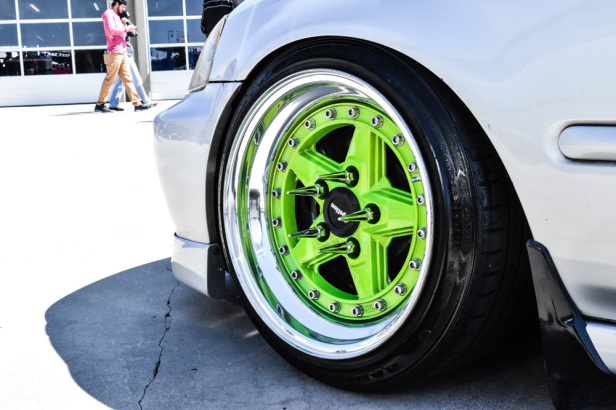
The factors which matter most to you will help you make the right choice, or allow you to communicate to your tyre fitter what you want so they can make the right choice for you.
- Road Handling and Traction. Quality tyres are designed to provide optimal traction on various road surfaces, ensuring better grip and control. This becomes crucial, especially during adverse weather conditions like rain or snow, where poor-quality tyres may lead to skidding and reduced handling. If you like to drive fast, or if your region is prone to adverse weather, then you want a tyre built for these needs.
- Braking Efficiency. High-quality tyres are engineered with advanced braking technology, enabling shorter braking distances. This feature can be a lifesaver in emergency situations, as it allows you to stop your vehicle more effectively and avoid potential accidents. The faster or more erratic you drive, the more emphasis you should put on a tyre capable of helping you stop.
- Comfortable Ride. Premium tyres tend to have less road noise and vibrations, and sometimes offer a more comfortable ride. Cheap tyres, on the other hand, may result in a noisier and less enjoyable ride. That said, many mid-range built for purpose tyres will give you a perfectly acceptable ride and noise level. Make sure you research the tyre you plan to buy, and see what others have said.
- Durability and Longevity. Premium tyres tend to be constructed with more durable materials, with innovative tread designs which last longer. This may matter for you, but if they cost twice as much and only cover another 10,000 km then it may not be your best investment. Buying a set of cheaper tyres, especially when on sale, may cost you half as much and nearly match the durability.
- Fuel Efficiency. Really cheap tyres may appeal to you on price, but over the lifespan of the tyre may cost you more in lack of fuel efficiency. The amount this may cost you over the lifespan of the tyre will often be an unknown, but it’s a factor worth considering. Fit for purpose mid-range tyres are generally a better balance between efficiency and price.
Tips and Strategies for Finding Cost-Effective Tyres
It’s not just about the brand or model of tyre you buy. Most of the time it’s about where you buy and the price you pay.
Most tyre fitters offer specials on specific brands, and there is also the option of buying cheap car tyres online.
Here are tips and strategies for finding your next set of tyres:
Compare Prices Online
Find your local (reputable) tyre fitters, and search their website for current tyre prices and types. Most allow you to type in the specifics of your tyre, or even the make and model of your car, and give you an aggregate list of affordable options.
Online tyre retailers like Tyroola (who’re great by the way) have become very popular in recent years due to competitive prices, so it’s worth comparing prices with them as well. An online tyre retailer will often have a service where a tyre fitter will come to your home and change your tyres on your driveway.
Keep in mind a local tyre fitter will also check wheel alignment and other metrics, which are services an at-home tyre fitter may not offer.
Look for Seasonal Sales and Promotions
Keep an eye out for seasonal sales, holiday promotions, and clearance events. Many retailers offer discounted prices during specific times of the year, such as EOFY, allowing you to cash in on significant savings.
Enquire About Bundled Deals
Some tyre retailers may offer bundled deals which include tyre installation, alignment, or additional services like servicing at a discounted rate. This is often a cost effective way for you to have work completed on your vehicle, and benefits the tyre retailer as they can make the most of the time your car is at their premises.
How to Make Cheap Tyres Last Longer
The following tips apply to premium tyres as well, but as you’re budget conscious you’ll likely care more:
Driving Style
If you’re the type of person to turn your wheels on full lock while stationary, such as turning or pulling out of a drive, then you should break this habit. Doing this repeatedly will prematurely wear your tyres or cause damage.
Do you hit kerbs often? Or pot holes? Both will affect tyre wear.
Below are ways you can adapt your driving style to improve the longevity of your tyres:
- Avoid Speeding and Sudden Braking – High speeds and abrupt braking can cause excessive wear on your tyres. Drive at moderate speeds, like your Grandad, and practicing smooth braking will increase tyre longevity.
- Steer Clear of Potholes and Obstacles – No matter how often we complain to our local shire, sometimes potholes and other obstacles are avoidable. Hitting an offensive pot hole can throw your wheel alignment out, and before you know it your tyres have worn unevenly. Best to avoid pot holes and obstacles as much as possible, which means driving sensibly and within the speed limit (and now I sound like my Grandad).
- Be Mindful of Overloading – Overloading your vehicle puts stress on your tyres for obvious reasons, and can also affect camber which causes your tyres to wear more on the inside. This is particularly common with tradie vans with heavy loads. Check your vehicle’s weight limits and avoid exceeding them, and don’t carry heavy loads unnecessarily.
- Drive Smoothly on Curves – Taking turns at high speeds can lead to uneven wear on the outer edges of your tyres. Save this for Verstappen and Hamilton. Taking corners smoothly will greatly reduce tyre wear.
Monitor Tyre Condition and Wear
Regular checking your tyres for the following will allow you to maximise their longevity:
- Regularly Check Tyre Pressure – Make sure tyre pressures remain at the recommend pressure (PSI). Most petrol station tyre pressure machines are free, so get in the habit of checking regularly. Proper inflation will help with fuel efficiency and maximise tyre life.
- Monitor Tread Depth – Regularly inspect the tread depth of your tyres, using a tread depth gauge if you have one. Make sure you check tread depth across the entire width of all tyres, as it’s common for tyres to wear unevenly if alignment is incorrect or other components need maintenance. If any tyres have worn out tread, replace them.
- Perform Regular Tyre Rotations – Not many people do this, but rotating your tyres at regular intervals (such as every 10,000 km) can make sure tyres wear more evenly and last longer. Here’s a guide to rotating car tyres.
- Wheel Alignment Check – Getting your wheel alignment checked regularly is worth doing. Misaligned wheels are often the cause of uneven wear, and is simple and fairly cheap to rectify. If you notice your tyre tread is wearing unevenly, or if you’ve hit any kerbs recently, then a wheel alignment check is worth doing.
Do Not Mix and Match Tyres
This is especially the case for tyres with different speed ratings.
If you have one brand of tyre on one corner, and a different brand or type of tyre on another corner, this will likely cause excessive and uneven wear.
You may be fine if the two front tyres differ slightly from both rear tyres, but ideally you want even tyres on all four corners of your vehicle.
How to Avoid Scams When Buying Tyres
What a tyre retailer may call “cross selling” or “upselling” may feel like a legitimate business technique to them, may feel like a scam to you. A less-reputable tyre fitter may offer amazing deals on cheap tyres, but use other ways to take your money.
Here are ways a tyre fitter may extract more of your hard-earned dollars than you expect:
- Bait-and-Switch – This is a classic technique used to get you in the door. It’s similar to dangling a carrot, but getting you to buy a turnip instead. The bait-and-switch technique works by offering you a great deal on a top brand tyre, then tell you the tyre is out of stock or the offer has come to an end. They will then offer you a different tyre for a less attractive deal. This works as usually once you’re at their premises you won’t want to leave without new tyres. Always be cautious of sudden price changes when you arrive at the store.
- Hidden Fees – Watch out for hidden fees like additional installation charges or mandatory add-ons which increase the overall cost. Reading customer feedback online may alert you to these tactics, and quite often it’s not until after your tyres are fitted you’re informed of the hidden costs.
- Cross-selling – Many tyre fitters will attempt to offer other services while your car is on their premises. They may find your wheel alignment is out, even marginally (or claim it is), and offer to fix this for a fee. You don’t want your wheel alignment out so will agree and pay the money, even if your alignment is fine. Assessing the wear of your tyres beforehand may alert you of this. Other cross-selling may be as simple as informing you your tyre repair foam is past use by date or offering you a service as a bulk deal. Sometimes this may be a genuine benefit to you, but be aware of cross-selling.
REFERENCE: Tyre Speed Ratings
Tyre speed ratings are determined with laboratory tests. The tests work by running the tyre in steps of 10km over 10 minute periods until the required speed has been met. The tyre must demonstrate it can sustain a speed when tested with similar loads.
You may be a little confused why some letters are out of sync, but this has occurred from the speed ratings of vehicle categories being increased over time.
| Speed Rating | Maximum Speed km/h | Max Speed mph | Vehicle Type |
| L | 120 | 75 | Off-Road / Light Truck |
| M | 130 | 81 | Temporary Spare |
| N | 140 | 87 | Temporary Spare |
| Q | 160 | 99 | Winter 4X4 |
| R | 170 | 106 | Heavy Duty Light Truck |
| S | 180 | 112 | Family Sedan / Van |
| T | 190 | 118 | Family Sedan / Van |
| U | 200 | 124 | Sedan / Coupe |
| H | 210 | 130 | Sport Sedan / Coupe |
| V | 240 | 149 | Sports Car |
| Z | 240+ | 149+ | Sports Car |
| W | 270 | 168 | Exotic Sports Car |
| Y | 300 | 186 | Exotic Sports Car |
| (Y) | 300+ | 186+ | Exotic Sports Car |
REFERENCE: Tyre Load Ratings
| Load Index | Max Load (kg) |
| 81 | 462 |
| 82 | 475 |
| 85 | 515 |
| 86 | 530 |
| 87 | 545 |
| 90 | 600 |
| 92 | 630 |
| 95 | 690 |
| 96 | 710 |
Further Questions About Cheap Tyres
Below you’ll find some of the common questions asked about cheap tyres. Anything which hasn’t been covered above that is.
How Often Should You Change Cheap Tyres?
Cheap tyres may wear quicker than premium tyres. Usually the price difference accounts for this, but as a general rule they will cover less km.
The lifespan of cheap tyres varies based on factors like driving habits, road conditions, and maintenance. Regularly inspect tyre tread depth, and consider replacing tyres when they reach the recommended minimum tread depth.
I know quite a few people who run discount tyres for 50,000 to 60,000 Kms before installing the next set.
Are Cheap Tyres More Likely to Blow?
This question is difficult to answer as the circumstances might be very different. For example, a flat tyre is more likely to blow, but that would be your fault. Road hazards are also equally responsible for blown up tyres. In fact, 9 out of 10 times, road hazards are responsible for blown up tyres, irrespective of the quality of tyre.
Are Cheap Tyres Safe for Regular Use?
Yes, many budget-friendly tyre options are safe for regular use provided they meet industry safety standards and are used appropriately for their intended road conditions.
How Do I Identify Reliable Cheap Tyres?
Look for reputable brands known for providing reliable and budget-friendly options. Check customer reviews and ratings for insights into the performance of specific tyre models.
Can Cheap Tyres Provide Good Traction in Wet Conditions?
Yes, some cheap tyre models offer good wet traction. Most of the time premium tyres cost much more to cater for speeds significantly above the speed limit. Look for tyres with specific tread patterns and materials designed to perform well in wet road conditions.
Do Budget Tyres Offer Similar Fuel Efficiency as Expensive Tyres?
Some budget-friendly tyres are designed to offer competitive fuel efficiency, so may be more efficient than premium tyres designed for other purposes, such as sport and performance. Look for tyres with high UTQG (Uniform Tire Quality Grading) ratings for improved fuel economy.
Are Cheap Tyres a Good Choice for Off-Road Driving?
For off-road driving, consider investing in specialised tyres designed for rough terrains. While some cheap tyres may offer decent off-road performance, purpose-built off-road tyres are usually more suitable, and you’ll more likely save the embarrassment of getting bogged.
Can I Trust Online Sellers for Cheap Tyres?
Yes, reputable online sellers can offer reliable cheap tyre options. This is possible from having less overheads for their premises, and not needing to have a customer-facing section or staff. Always read customer reviews, verify seller ratings, and check for secure payment options before making a purchase.
What Is the Best Time of the Year to Buy Cheap Tyres?
The best time to find discounts on cheap tyres is during end-of-year sales, holiday promotions, and seasonal clearance events.
That said, if you scout around your local tyre fitters you will find most will have some brands of tyre on special offer.
How Can I Properly Dispose of Old Tyres?
Old tyres must be disposed of properly, such as at a tyre recycling center. Your easiest option is to have a tyre retailer dispose of them for you, which they will usually do for free.
You should not dispose of old tyres by any other means, and if using a skip you must ensure the company allow for tyre disposal.


